Computer Engineering
Physicsworld
262

Image Credit: Physicsworld
The Physics Chanteuse: when science hits a high note
- Lynda Williams, also known as the 'Physics Chanteuse', combines physics with cabaret and satire through her songs inspired by pulsars, nuclear politics, and hypothetical love particles.
- In a podcast episode of Physics World Stories, Williams shares insights into her writing process, dedication to accuracy, and experiences performing for notable physicists like Stephen Hawking arranged by Kip Thorne.
- Her upcoming show 'Atomic Cabaret' explores the existential risks of the nuclear age, starting in Belfast on June 18 and moving to the Edinburgh Festival in August.
- If you enjoy physics intertwined with showbiz and social activism, Lynda Williams' unique approach to science communication is sure to strike a chord. For more information, visit Lynda's website.
Read Full Article
15 Likes
Physicsworld
384
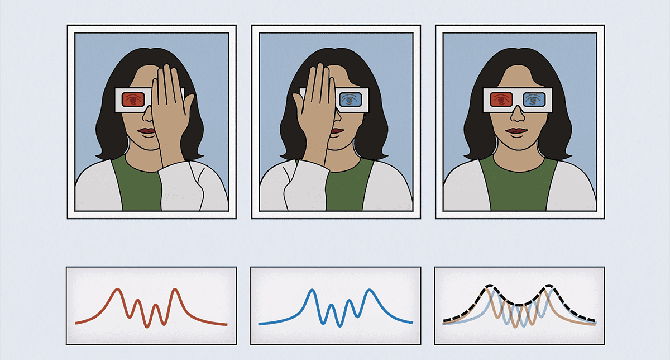
Image Credit: Physicsworld
The quantum eraser doesn’t rewrite the past – it rewrites observers
- The article discusses the concept of the quantum eraser in relation to a thought experiment and its connection to the famous double-slit experiment.
- By erasing the memory of past measurements, the quantum eraser experiment aims to restore wave-like behavior to particles, showcasing the intricate nature of quantum correlations and entanglement.
- The delayed-choice quantum eraser introduces a unique twist by proposing the erasure of information about particle paths through complementary measurements with a single qubit detector.
- The experiment demonstrates that despite showing particle-like clumps on the screen, complementary measurements can unveil wave-like interference patterns, providing deep insights into quantum theory.
- While some interpretations suggest backward-in-time influence, researchers like Johannes Fankhauser offer explanations without the need for such influences by linking the eraser experiment to Bell experiments and de Broglie–Bohm interpretation.
- The quantum eraser poses questions about the role of observation in quantum outcomes and challenges classical physics models, showcasing the complex and nuanced nature of quantum phenomena.
- Researchers like Jonte Hance and Lorenzo Catani further explore the implications of the eraser experiment in understanding quantum correlations and deviations from classical physics, highlighting its significance in probing the limits of our current understanding.
- The quantum eraser serves as a tool for delving into the mysteries of quantum mechanics and provides valuable insights into the behavior of particles, observers, and quantum computers.
- While formal results align with standard quantum theory, the quantum eraser continues to spark discussions and analysis among physicists, offering a balance between mathematical rigor and conceptual interpretation.
- As part of Physics World's contribution to the 2025 International Year of Quantum Science and Technology, the article underscores the ongoing exploration of quantum phenomena and its applications in the realm of physics.
- Despite not rewriting the past, the quantum eraser concept symbolizes a gateway to unraveling the intricacies of quantum mechanics and reshaping our perspectives on quantum behavior and observation.
Read Full Article
23 Likes
Physicsworld
54
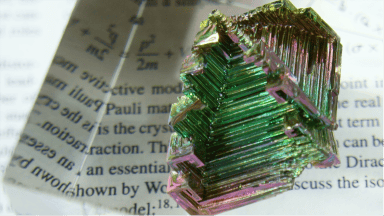
Image Credit: Physicsworld
Has bismuth been masquerading as a topological material?
- Bismuth has puzzled scientists for nearly 20 years, with conflicting answers on its topological nature from theorists and experimentalists.
- Researchers in Japan suggest that surface relaxation in bismuth may have masked its true topological properties.
- Topology in materials can affect their conductivity, and topological insulators have potential for applications in quantum computing and more.
- Detecting surface states in materials like bismuth can provide insight into their bulk properties.
- Studies on bismuth revealed lattice expansion near the topological transition point, affecting its surface wavefunction.
- This 'topological blocking' phenomenon in bismuth may explain conflicting experimental results on its topological nature.
- Researchers are now exploring how lattice relaxation impacts material properties and potential for topological engineering.
- The study also paves the way for designing topological materials by manipulating strain, bonding coordination, and substrate interface.
- The research findings have implications for better understanding topological materials and conducting consistent experiments.
- The study was published in Physical Review B, shedding light on bismuth's enigmatic behavior in the realm of topological materials.
Read Full Article
3 Likes
Physicsworld
72
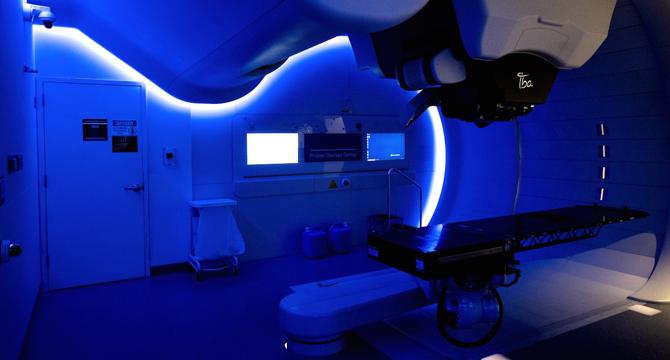
Image Credit: Physicsworld
Proton arc therapy eliminates hard-to-treat cancer with minimal side effects
- Step-and-shoot proton arc therapy has been successfully used to treat head-and-neck cancer in a human patient, offering precise treatment with minimal side effects.
- Proton therapies like step-and-shoot technology provide continuous and automated radiation delivery to tumors, optimizing treatment plans.
- This new technique was trialed on a patient with adenoid cystic carcinoma, resulting in minimal side effects and no radiation toxicity to other body areas.
- Researchers aim to further develop the dynamic proton arc technique, known as DynamicARC, for more advanced cancer treatment.
Read Full Article
4 Likes
Discover more
- Programming News
- Software News
- Web Design
- Devops News
- Open Source News
- Databases
- Cloud News
- Product Management News
- Operating Systems News
- Agile Methodology News
- Startup News
- Cryptocurrency News
- Technology News
- Blockchain News
- Data Science News
- AR News
- Apple News
- Cyber Security News
- Leadership News
- Gaming News
- Automobiles News
Knowridge
258

Image Credit: Knowridge
Scientists discover unexpected 2D copper boride with unique atomic structure
- Scientists have discovered a new two-dimensional material, 2D copper boride, with a unique atomic structure while attempting to make borophene.
- The discovery offers insights into the interaction of boron with metals like copper and could lead to the creation of a new family of 2D materials.
- Boron atoms unexpectedly bonded tightly with copper, forming a distinct atomic pattern different from traditional 2D materials like graphene.
- This discovery paves the way for exploring a wider range of 2D materials with potential applications in energy storage, electronics, and high-performance materials.
Read Full Article
15 Likes
Arstechnica
67

Image Credit: Arstechnica
The key to a successful egg drop experiment? Drop it on its side
- Egg drop competitions are popular in physics classes, challenging students to build a device to protect an egg dropped from a height.
- MIT research questions the conventional wisdom of dropping eggs vertically, finding that dropping them on their side may be more successful.
- Physics party trick of walking on eggs also supports the notion that aligning eggs to distribute weight prevents breaking.
Read Full Article
4 Likes
Nytimes
58

Image Credit: Nytimes
What Sonic Detectives Listen for When Rockets Launch
- Rocket launches, especially from companies like SpaceX and Blue Origin, have become more frequent, causing increased noise levels that impact communities.
- The noise from rocket launches includes the roar of the rockets going up and the sonic booms from rocket boosters returning to Earth, shaking windows and disturbing residents.
- The complexity of how sound waves travel during rocket launches poses challenges, as existing rules and limits designed for other noisy events may not be sufficient.
- Scientists, like Kent Gee, are studying the sounds of spaceflight to understand what noise levels are acceptable and how to mitigate the impact, especially as companies like SpaceX test larger and louder rockets like Starship.
Read Full Article
3 Likes
Quantumfrontiers
13

Image Credit: Quantumfrontiers
The most steampunk qubit
- An artist was informed about a quantum-computing experiment using a 'mechanical qubit' by steampunk artist Bruce Rosenbaum.
- The 'steampunk qubit' stored quantum information in a vibrating mechanical device like a drumhead.
- Collaboration on a quantum-steampunk sculpture sparked discussion about incorporating the qubit design.
- Alp Sipahigil, from UC Berkeley, proposed a quantum qubit design using a cantilever mechanism.
- The proposed qubit design utilized energy levels of a cantilever for quantum information storage.
- A flaw in the plan involved the cantilever having multiple energy levels with equal inter-level energy gaps.
- A solution proposed was placing an atomic-force microscope to manipulate the cantilever's energy levels for quantum operations.
- By carefully choosing parameters, the cantilever could be controlled to hold quantum states without transitioning to higher energy levels.
- Alp expressed interest in building the mechanical qubit if he finds a suitable student to conduct the experiment.
- Chu's team used a superconducting qubit to alter their cantilever's energy levels in a similar experiment.
Read Full Article
Like
Medium
18
Image Credit: Medium
Science IV: Point Theory 4, Points Dimensions and Infinity
- Points and infinity share similarities as they both cannot be fully measured due to their infinite nature.
- By stacking an infinite number of 9s after .999, it becomes equal to 1, demonstrating the concept of infinity creating something out of nothing.
- Infinity in mathematics can be shown by equations like .999… = 1, indicating how repetition leads to equality in the infinite.
- The concept of points creating lines can be better understood by delving into the nature of infinity and sets equivalence.
- Infinity=infinity showcases that every real number value can correspond to values between -infinity and infinity.
- Mapping extra variables in infinite sets without overlap is possible, demonstrating the unique properties of infinity.
- Infinitely stacked points give rise to lines, highlighting how an immeasurable unit contributes to tangible creations.
- Moving to higher dimensions, stacking lines results in squares, and stacking squares gives rise to cubes, showcasing the progression of dimensions.
- The Inter-Dimensional theory proposes that the infinite stacking of lower-dimensional matter creates higher-dimensional matter.
- Ultimately, all matter can be traced back to infinite stacks of points, showcasing the foundational role of points in forming our reality.
Read Full Article
1 Like
Brighter Side of News
131
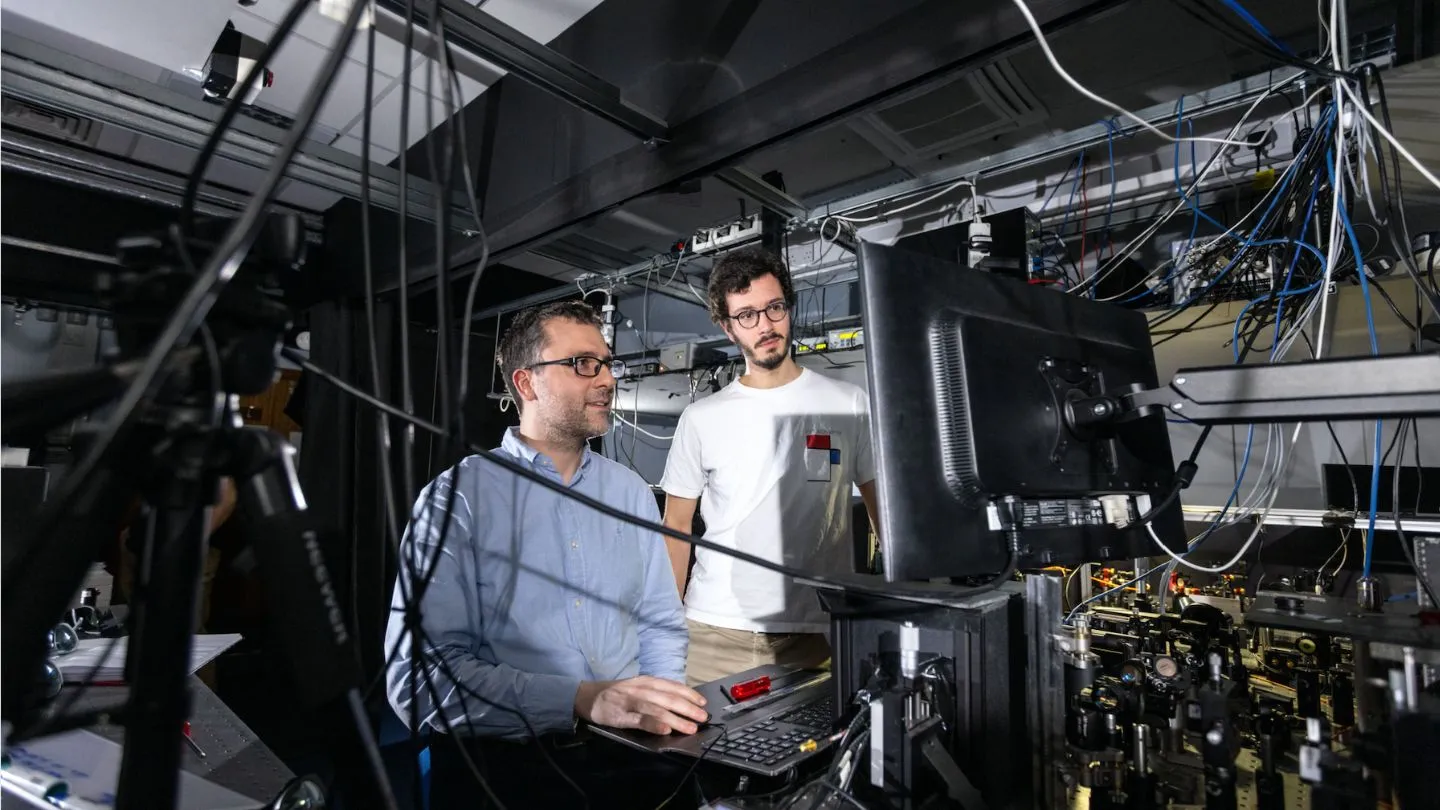
Image Credit: Brighter Side of News
Physicists rewrite quantum rules by bending light through both time and space
- Physicists at Imperial College London have conducted a new time-based version of the iconic double-slit experiment, exploring light's interaction with materials that change optical properties rapidly.
- The original double-slit experiment by Thomas Young in 1801 revealed light's wave-like behavior and dual nature as both waves and particles, revolutionizing quantum physics.
- The recent experiment altered light's frequency through lasers on a thin film, creating interference patterns in time instead of space, offering insights into light's fundamental nature.
- Published in Nature Physics, the findings open doors to advanced spectroscopy techniques and applications with potential in telecommunications and medical imaging.
- Controlling the timing and frequency of light could enhance data transmission speeds, optical computing, and medical imaging technology, contributing to faster and more efficient devices with reduced environmental impact.
- The research also provides a foundation for exploring time crystals and parallelized optical switches, promising more refined control over light with broader industrial applications in energy, defense, and aerospace.
- Metamaterials and quantum experiments like these offer the potential to reshape industries by manipulating light in space and time, paving the way for transformative advancements in technology and science.
- The experiment's significance extends to fields beyond telecommunications and computing, showcasing the profound impact of curiosity-driven research in driving innovation and advancements across various sectors.
- In conclusion, this groundbreaking work by Imperial College London exemplifies the transformative potential of understanding and controlling light, offering new possibilities in various domains from consumer electronics to healthcare.
Read Full Article
7 Likes
Hobbieroth
81
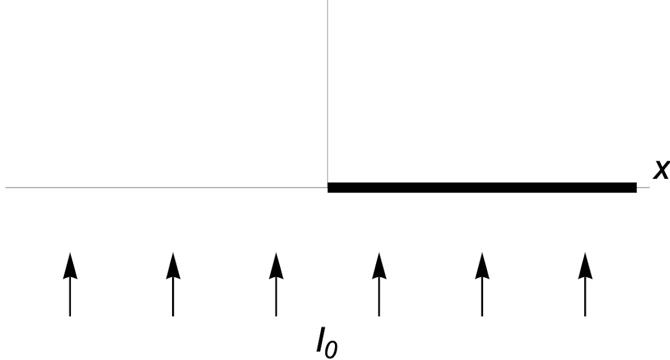
Image Credit: Hobbieroth
Knife Edge Diffraction
- Knife edge diffraction is a phenomenon that occurs when light diffracts off a screen, causing fringes to appear in certain regions.
- This problem can be solved analytically, involving Fresnel sine and cosine integrals.
- The intensity distribution beyond the screen reveals interesting oscillations and behavior based on mathematical functions.
- Wavelength plays a role in scaling the function along the x-axis, affecting how diffraction patterns appear.
- As wavelengths change, the distribution of intensity patterns adjusts, with long wavelengths spreading out more uniformly.
- Increasing the distance from the screen impacts how the intensity pattern spreads out, with a slower rate as the distance grows.
- Diffraction effects are most significant for long wavelengths, influencing phenomena such as visual acuity and microscope resolution.
- Sound waves also exhibit diffraction due to their long wavelengths, allowing them to bend around obstacles.
- Although complex, diffraction is a fundamental aspect of physics with applications in various fields like microscopy and ultrasound technology.
Read Full Article
4 Likes
Physicsworld
268
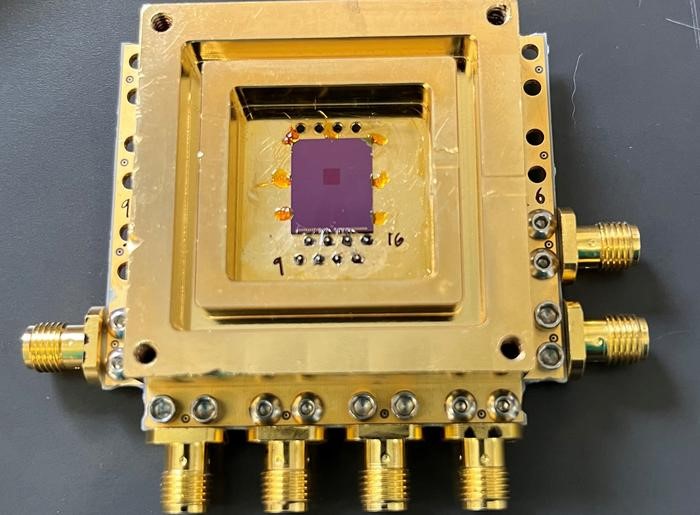
Image Credit: Physicsworld
Superconducting microwires detect high-energy particles
- An international team led by Cristián Peña at Fermilab has created a new detector using arrays of superconducting microwires to detect high-energy charged particles.
- Unlike traditional single-photon detectors, the new detector uses thicker wires capable of absorbing large amounts of energy from fast-moving protons, electrons, and pions.
- The superconducting microwire single-photon detector (SMSPD) was tested at Fermilab and showed sensitivity to various high-energy particles, with similar detection efficiency across different particle types.
- Further research aims to optimize the superconducting material and sensor geometry of SMSPDs to enhance detection efficiency, position and timing precision, potentially contributing to a deeper understanding of fundamental physics.
Read Full Article
16 Likes
Physicsworld
245
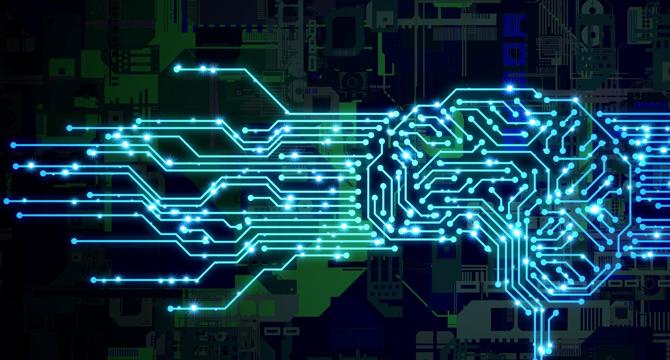
Image Credit: Physicsworld
What is meant by neuromorphic computing – a webinar debate
- Neuromorphic computing involves two main approaches: emulating biological neural processing systems through computational substrates and simulating neural processing systems on scalable architectures.
- A webinar debate hosted by Neuromorphic Computing and Engineering features teams of experts arguing for each approach, with an impartial moderator overseeing the discussion.
- Team emulation includes experts like Elisa Donati and Jennifer Hasler, while team simulation includes experts like Catherine (Katie) Schuman and Emre Neftci.
- The discussion chair, Giulia D’Angelo, is a Marie Skłodowska-Curie postdoctoral fellow focusing on neuromorphic algorithms for active vision.
Read Full Article
14 Likes
Physicsworld
350
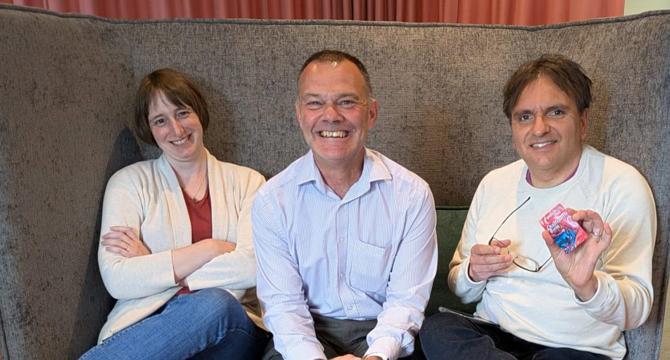
Image Credit: Physicsworld
A Martian aurora, how the universe fades away, Heisenberg on holiday, physics of fake coins
- NASA's Perseverance Rover observes the first aurora on Mars from the planet's surface.
- Physics World discusses the future of the universe and how the last stars will fade away.
- Werner Heisenberg's quantum mechanics foundations on the German island of Helgoland will be celebrated at a centenary event.
- Neutrons are used to differentiate between real and fake antique coins in a physics study, along with insights on the Physics World Quantum Briefing 2025.
Read Full Article
21 Likes
Knowridge
113
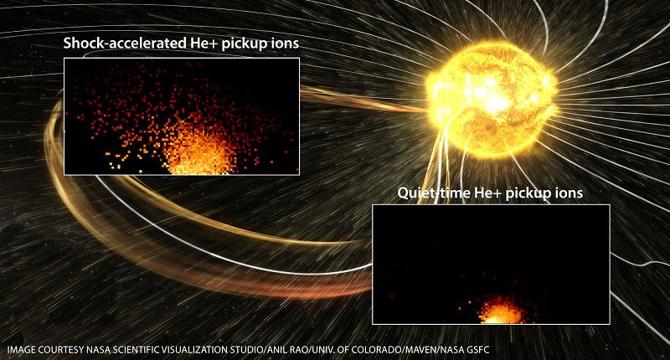
Image Credit: Knowridge
Scientists uncover how the Sun speeds up mysterious space particles
- Scientists at the Southwest Research Institute have discovered how the Sun influences helium pickup ions, a special type of space particle from outside our solar system.
- Solar activity, such as solar flares and coronal mass ejections, significantly impacts the speed and behavior of these helium pickup ions, which can travel up to twice as fast as the solar wind.
- By analyzing data from NASA's Solar TErrestrial RElations Observatory, researchers studied how these ions gain energy during solar events, especially their interactions with interplanetary shocks.
- Understanding the acceleration process of these pickup ions is crucial for predicting solar energetic particle events that can pose risks to astronauts, spacecraft, and technology on Earth.
Read Full Article
6 Likes
For uninterrupted reading, download the app